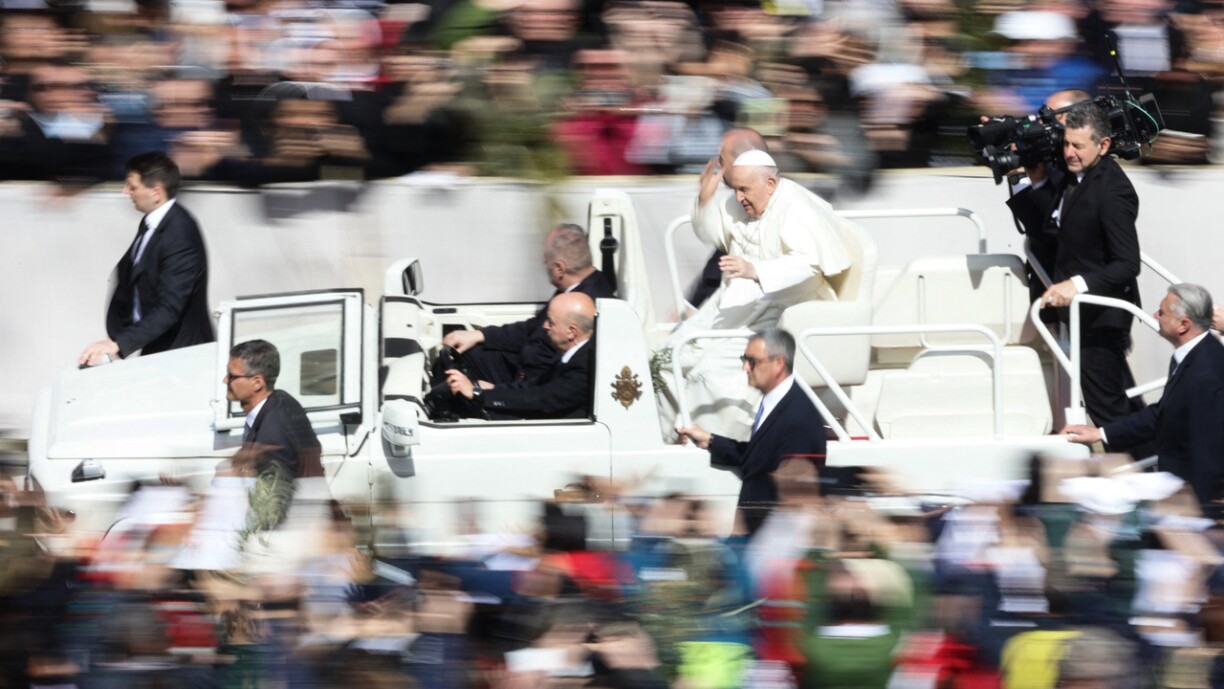
With just a few days to go until Pope Francis’ visit, excitement builds among many hoping to catch a glimpse of the head of the Catholic Church – and hopefully also the iconic Popemobile. Thousands of visitors are thus expected to flock to the streets of the capital between 12.45 and 1.15pm when the Pope is scheduled to ride his parade vehicle through Luxembourg City.
The procession is scheduled to depart from Cercle Cité on Place d’Armes and then head to Rue Chimay on to Boulevard Roosevelt. There, the Pope will pass the ‘Golden Lady’ before crossing Pont Neuf towards Gare. From there, the Pope will travel across Boulevard de la Pétrusse and Rue Heinrich Heine via the Rousegärtchen, on to Avenue de la Liberté.
Finally, he will cross Pont Adolphe onto Avenue Marie-Thérèse, where he will conclude his ride at the Bishop’s House for lunch. Space will be made available for the public to gather along the entire route.
Read also: Full schedule unveiled for Pope Francis’ visit to Luxembourg on 26 SeptemberRead also: Excitement mounts for Pope Francis visit, but hotels see limited boost
One detail remains unknown in light of the preparations for next Thursday: which Popemobile the Pope will be using. The Vatican has several versions of the vehicle at its disposal depending on weather conditions to maximise visibility and protection.
The modern Popemobile as we know it today can be traced back to Pope John Paul II. Although popes before him were driven in motorised vehicles, these rather resembled traditional state coaches. The first prototype for the now iconic vehicle was first developed for a trip to Poland in 1979, undertaken by John Paul II. The following year, during a visit to Germany, the concept materialised into the famed Popemobile.
For this visit, Mercedes Benz has adapted a 230 G-Wagon to meet the needs of the Pope. The vehicle therefore features an elevated seat to make the Pope more visible, as well as a dome to shield him from weather and potential threats. On top of that, the engine was modified to allow for a seamless, continuous walking pace.
Pope John Paul II’s extensive travels were a significant factor to the Popemobile’s evolution: during his nearly 27-year papacy, he visited 129 countries, including the Grand Duchy on 15 and 16 May 1985.
The Popemobile is said to have bridged a connection to the faithful in ways never before possible, turning papal visits into accessible events for both local and international audiences.
However, the increased visibility has not come without risks. On 13 May 1981, the Catholic community was shaken when Pope John Paul lI was shot by a Turkish right-wing extremist. The attack happened as the Pope was making his way to a general audience on St Peter’s Square, riding in an open Popemobile. Two bullets struck him, leading to emergency surgery and he survived the assassination attempt.
Following the attack, security measures around the Popemobile were significantly increased, and an armoured glass dome was added. The modified Fiat Campagnolo used during the assassination attempt is now housed in the Museo delle Carrozze in the Vatican.
John Paul II’s successor, Pope Benedict XVI, continued the tradition of the Popemobile. New vehicles were eventually added to the fleet, including the first electric car.
Pope Francis, known for his focus on simplicity, also added to the evolution by driving a hydrogen-powered vehicle. In 2020, Japanese bishops presented him with a Toyota Mirai equipped with an eco-friendly engine.